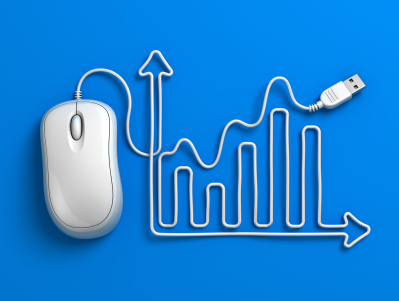Caring And Feeding Your Home On The Web: Your Existing Website!
Care of your existing website is as important as the creation. Set it and forget it mentality turns these web portals into barren real estate that holds no value, either for retention or resale.
You may say that you can’t afford to update or that it looks good and everything is fine with it.
But how long has it been since you checked for broken links? When was the content written? Did you check for any error messages on your pages? Is your website secure enough? Are all the plugins working?
If you imagine your website to be your car, would you drive it around with a flat tire? If it were your home, would you leave the broken windows without repair?
What are people going to think about you and why would anyone want to visit a website in a dilapidated condition?
How can you NOT afford to update?
Website Maintenance – The Key To Marketing Success
Consistently updating a website’s content is the only way to maintain a competitive edge. Here is a look at the importance of updating certain aspects of a website to ensure that users are getting the best experience possible which will, in turn. result in improved sales and a better online presence. ~ Dave Stephenson via seo-news.com
 The hard part of website creation is already over and you have a great website in place. But if it’s been a while since you updated it or if you’ve never updated it (like most new marketers), then it’s time you take a look.
The hard part of website creation is already over and you have a great website in place. But if it’s been a while since you updated it or if you’ve never updated it (like most new marketers), then it’s time you take a look.
It may need SEO tweaking, what with the search engine algorithm changes, it may need new pages, site map updated, links checked, social networking buttons added or updated.
Manage Content
The implication is that Google measures all of your documents for freshness, then scores each page according to the type of search query. While some queries need fresh content, Google still uses old content for other queries (more on this later.) ~ Cyrus Shepard via moz.com
Even the smallest of websites need fresh content frequently. Content includes: text, images, videos, infographics and a whole lot more. If you have an e-commerce website, it’s obvious that your products keep changing.
Haven’t we all seen sites that hold a forlorn look with content aging back to many years and seeking salvation? You don’t want that for your website that you so lovingly and carefully created.
- Remove all old material (unless its a blog) and update it with fresh content, with SEO done based on today’s needs.
- If the content is still relevant today, rewrite it a bit and make it fresh. Use new headlines and sub headings and optimize it. Whatever you do, refresh it.
- Look for calendars and dates, deadlines for old promotions, seasonal specials, products that no longer exist; and archive anything that has an expiration date immediately.
- Check for pages that you don’t have links to. These pages are orphaned and you can find them using analytics. If there are any such pages that are not needed, delete them from the hosting server.
- If you’ve enabled comments, respond to them every single day.
- Check your About Us page to see if it’s relevant today, including people’s names etc.
- Check the home page and ensure that your product or services are relevant today. Include or delete links as required.
- All new content should be optimized for peak performance.
- Update the site map after any changes.
- Link internally as required and if your website is lacking some good incoming links, check out guest blogging or social media promotion.
SEO And Analytics
Beyond the obvious sales and lead generation applications, marketing analytics can offer profound insights into customer preferences and trends. Despite these compelling benefits, a majority of organizations fail to ever realize the promises of marketing analytics. According to a survey of senior marketing executives published in the Harvard Business Review, “more than 80% of respondents were dissatisfied with their ability to measure marketing ROI.” ~ via Larry Kim at Wordstream.com
I keep stressing on the importance of analytics to every new marketer. Your website’s analytics holds the key to understanding how your site is viewed and used by new visitors or existing customers. It offers crucial data, including your sales data that helps you track the performance of every section of your website.
 If you don’t have it installed, get it now. Google analytics is a great option. If you have analytics on your website, go through the data and see the pages that are stagnating and the pages that continue to attract traffic. When updating your website, such information can guide you in the right direction.
If you don’t have it installed, get it now. Google analytics is a great option. If you have analytics on your website, go through the data and see the pages that are stagnating and the pages that continue to attract traffic. When updating your website, such information can guide you in the right direction.
If you’ve registered with a slew of search engines, analytics will also show you the search engines that are getting you the most hits and those that are doing nothing for your website.
- Register with the relevant search engines for your business type.
- Add site-tracking technology to make sure you know what your visitors are doing in real-time.
Promote Your Website
This is an ongoing process and not a one time thing. You promote today, see traffic tomorrow, and you relax the day after. That’s the route taken by many and that’s the reason you see so many attempts at online marketing fail.
The golden rule: NO traffic is permanent. It needs to be continuously encouraged and prodded to visit your website.
Regular promotional strategies are a must to be a success online. There are several ways you can promote your business. Use your imagination and gain lots of knowledge on the different traffic generation strategies.
Here are some successful methods:
- Email campaigns, including email newsletters.
- Social media presence.
- Discount programs and other limited-time offers.
- Content marketing.
…………and more.
That’s Not All
As promised, Twitter is squeezing the knot around the neck of third-party Twitter apps that mimic Twitter.com with a more stringent set of API rules.
The impact on users won’t be visible until the new changes take effect — but for some users, it could mean a drastically different experience. ~ Christina Warren via mashable.com
If you’re heaving a sigh of relief, then don’t. There are several other things you need to keep your eye on.
For example, Twitter recently changed its API. If you don’t know what it is, it’s the software-building code library. These API changes affect all software that has ever been written to interact with Twitter. Many users have no clue about this. People install these widgets and plugins with a click and they think that’s the end of it. If only things were that easy. With the API changes, these widgets and plugins start showing error messages because they cannot connect to Twitter anymore. They need to be updated.
And the worst part is, it’s not just Twitter, many other Internet services keep changing their APIs once in a while, like Facebook and Google.
You need hawk-like eyes to stay on top of the marketing game. But the results are well worth it.
Your Customers Are Watching
 New or old, your website is your home on the Web and it’s a valuable asset that needs to be nurtured and cared for at all times.
New or old, your website is your home on the Web and it’s a valuable asset that needs to be nurtured and cared for at all times.
Take a backup of your website regularly, to ensure you don’t lose everything, should something happen. This can be done efficiently by scheduling backup cycles, bi-monthly or monthly, or more frequently depending on the frequency of the updates.
How long has it been since you updated your website? Last month? Last week? Not yet?
-
 0
05 email marketing mistakes you don’t want to make
-
 0
0How To Create Social Media Contests That Actually Make You Money
-
 0
0The New Business Owners Guide to Marketing on Social Media
-
 0
0Is Twitter Dead? You Might Be Surprised
-
 0
0Do I need to be on every social media channel to market my business?
-
 0
03 Steps To Making Your LinkedIn Ads Irresistible
Leave a Reply
When you visit any web site, it may store or retrieve information on your browser, mostly in the form of cookies. Control your personal Cookie Services here.



